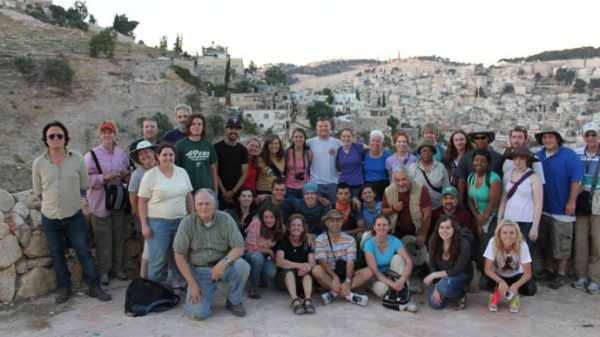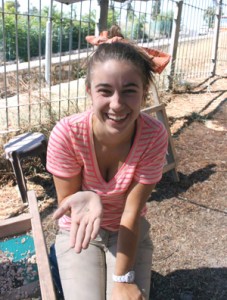Students, Others Excavate at Ancient Mount Zion Dig Site in Jerusalem

This summer’s excavation at the Mount Zion dig site in the city of Jerusalem has offered 18 UNC Charlotte students, as well as faculty and staff, a rare opportunity to conduct research at an ancient site with religious and historical significance.
The team, which included UNC Charlotte Levine Scholars, graduate students in religious studies, and students from other universities, spent two weeks on-site through June 30 as part of an education abroad experience that is part of a multi-year archaeological excavation. The dig is continuing for two weeks after conclusion of the education abroad portion, with non-students participating. Approximately 60 people are participating overall.
The initiative comes under the academic oversight of the University of North Carolina at Charlotte – the only American university licensed to carry out such excavations in Jerusalem.
Participants are exploring the ancient remains of three civilizations in the Old City with its historic Jewish, Armenian, Christian and Muslim quarters as well as the cultural diversity of the modern metropolis of Jerusalem. This unique dig site is situated close to a number of important places in the history of the city, such as the Praetorium where Jesus was tried before Pontius Pilate, and the House of Caiaphas and the other priestly families in the Upper City of Jerusalem in the first century CE.
In the Byzantine period, the area was situated at the southern end of the Cardo Maximus, which was a grand columned street. In the 6th century, Justinian built the Nea Church just north of the site to honor Mary, mother of Jesus.
The crest of Mount Zion was a focus for the building of houses in the Early Islamic Period. The Crusaders and the Ayyubids built their fortifications across the crest of the hill, and in the early 13th century, the local Sultan destroyed the gate-tower, which was located in the area of the excavation.
 Students will earn three hours of college credit and are participating in archaeological fieldwork, lectures, and specially guided tours of Jerusalem and the Judean Desert including the Dead Sea and Masada.
Students will earn three hours of college credit and are participating in archaeological fieldwork, lectures, and specially guided tours of Jerusalem and the Judean Desert including the Dead Sea and Masada.
James Tabor, chair of the Department of Religious Studies at UNC Charlotte, and Shimon Gibson, Israeli archaeologist, Fellow at the Albright Institute in Jerusalem and adjunct professor at UNC Charlotte, co-direct the project.
Writing on his blog, Tabor said “We were delighted to have a stream of distinguished visitors to our site from the archaeological community the past two weeks, among them Shalom Paul, Biblical Scholar from Hebrew University,” said Tabor, writing on his blog.
“(Also) Gerald Finkelstein of the Israel Antiquities Authority who excavated the New Gate in Jerusalem, Dan Bahat, who knows the site well from the 1970s and Hillel Geva who is publishing the results of the excavations in the nearby Jewish Quarter that has many parallels to our site–plus quite a few more,” Tabor wrote. “All seemed impressed with both our methods and our site. We are the only university that is running an archaeological field school at an excavation in Jerusalem.”
Diane Zablotsky, director of the Levine Scholars Program, is co-directing the university’s education abroad program with Tabor; Geoff Love, a faculty member in the College of Arts + Architecture, is capturing still photography and filming of the site to produce 3-D and digital models for future planning.
Images: courtesy of James Tabor.